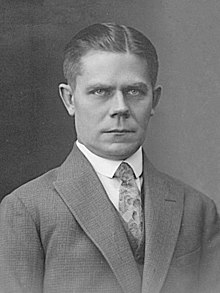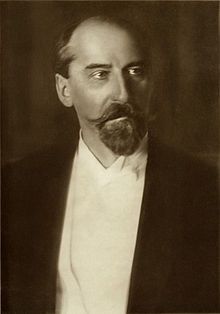General election in Estonia in 1920


The Estonian parliamentary elections in 1920 took place on November 27-29. It was the elections for the first legislative term of the Estonian Parliament ( Riigikogu ) after the adoption of the Estonian Constitution of 1920 by the Constituent Assembly ( Asutav Kogu ) .
Election date
The first constitution of the Republic of Estonia was adopted on June 15, 1920 by the Constituent Assembly elected in April 1919 .
On July 2, 1920, the Constituent Assembly, which exercised legislative power in Estonia until a parliament was elected , passed the electoral law for the Republic of Estonia (Riigikogu valimise, rahvahääletamise ja rahva algatamise õiguse seadus) .
The new Estonian Constitution came into force on December 21, 1920, immediately after the first parliamentary elections. The legislative mandate of the Constituent Assembly ended the day before. Legislative power was from now on exercised solely through the Riigikogu .
Electoral process
The 100 MPs were elected for a three-year legislative period on the basis of proportional representation. The parties drew up lists for the ten constituencies for election. The same candidates could run in multiple constituencies. Seats were allocated according to the D'Hondt procedure .
Election result
In the parliamentary elections in 1920, 17 parties and groups stood for election. Ten made it into the first legislative term of the Riigikogu .
The winner of the election was the Estonian Labor Party (Eesti Tööerakond) . Despite losing votes, it moved into the Estonian parliament as the largest parliamentary group with 22 seats. In 1919/20 the party had moved more into the center of the left wing of the party spectrum.
With 21 MPs, the Federation of Farmers was slightly behind. The agrarian party was able to make up for the unexpected fall in the elections for the Constituent Assembly and nearly tripled its share of the vote.
The loser in the election was the conservative Estonian People's Party (Eesti Rahvaerakond), which, as the ruling party, had to push through unpopular measures. At the same time, the Estonian Social Democrats, which had made up the strongest faction in the Asutav Kogu , lost half of their electorate. The social democratic ESDTP lost votes in favor of the more radical left-wing socialist EISTP (11 seats) and the communists (5 seats).
The Baltic German and Russian-speaking minorities were also able to send members to parliament. Hans Pöhl entered the Riigikogu as a representative of the Swedish minority on the electoral roll of the Christian People's Party . Attempts to found an independent Jewish party in Estonia , however, failed.
Official end result
Parties represented in parliament
| Political party | German name | political orientation | % (Election 1920) |
Seats I. Riigikogu (election 1920) |
% (Election of Asutav Kogu 1919) |
|
|---|---|---|---|---|---|---|
| Eesti Tööerakond | Estonian Labor Party | Middle left | 21.0% | 22nd | 25.1% | |
| Põllumeeste Kogud | Association of farmers | conservative-agrarian | 20.8% | 21st | 6.5% | |
| Eesti Sotsiaaldemokraatiline Tööliste party | Estonian Social Democratic Labor Party | social democratic | 17.0% | 18th | 33.3% | |
| Eesti Iseseisev Sotsialistlik Tööliste Party | Estonian Independent Socialist Workers Party | left socialist | 10.6% | 11 | 5.8% | |
| Eesti Rahvaerakond | Estonian People's Party | Middle right | 10.4% | 10 | 20.7% | |
| Kristlik Rahvaerakond | Christian People's Party | Christian-conservative | 7.5% | 7th | 4.4% | |
| Eesti Ametiühisuste Kesknõukogu | Central Council of Estonian Trade Unions | Communist | 5.3% | 5 | - | |
| Saksa-Balti Erakond | Baltic German Party | Baltic German minority | 3.9% | 4th | 2.5% | |
| Vene Rahvuslik Liit Eestis | Russian National Association in Estonia | Russian-speaking minority | 1.8% | 1 | 1.2% | |
| Majandusline praises | Economic grouping | Interest party | 1.1% | 1 | - | |
Parties not represented in parliament from 1920 to 1923
The other parties and groups did not receive parliamentary seats:
- Eesti Vabariigi Peipsiäärsed kodanikud ("Citizens of the Republic of Estonia on Lake Peipus "): 0.3%
- Meie Matsi mehed : 0.1%
- Eesti Vabariigi Võitlussõjavägi ("Fighting Army of the Republic of Estonia"): 0.0%
- Juudi Vähemusrahvus ( Jewish minority ): 0.0%
- Juudi rahva vähemus ( Jewish minority ): 0.0%
- Kristlik rühm ("Christian group"): 0.0%
- Kuigatsi valla hääleõiguslikud kodanikud "(Citizens of Kuigatsi Municipality entitled to vote )": 0.0%
Government formation
On January 4, 1921, the newly elected parliament met for the first time in the “White Hall” of the palace on Tallinn Toompea . The plenary elected Otto Strandman ( Estonian Labor Party ) as President of Parliament. It was not until September 12, 1922, that Parliament was able to inaugurate the newly designed rooms by architects Eugen Habermann and Herbert Johanson .
The government of the Estonian Labor Party, headed by the State Elder (Riigivanem) Anton Piip, resigned on January 25, 1921. Konstantin Päts from the Association of Farmers formed a new coalition government . The center-right coalition included:
- Põllumeeste Kogud (Association of Farmers)
- Eesti Tööerakond (Estonian Labor Party)
- Kristlik Rahvaerakond (Christian People's Party)
- Eesti Rahvaerakond (Estonian People's Party)
The government remained in office until November 1922. Then Juhan Kukk ( Estonian Labor Party ) formed a new government that remained in office until the end of the legislative period. In parliament it was able to rely on a majority of the Põllumeeste Kogud (Association of Farmers), the Eesti Tööerakond (Estonian Labor Party) and the Eesti Sotsiaaldemokraatlik Tööliste Party (Estonian Social Democratic Labor Party).
Dissolution of parliament
The first riigikogu was unable to fully end its three-year term. On the initiative of the Christian People's Party , a referendum was held in February 1923 on religious education in public schools. Since the people adopted the law previously rejected by the Riigikogu , the parliament had to be dissolved.
The elections for the second legislative period of the Estonian parliament take place from May 5th to 23rd, 1923.
literature
- Sulev Vahtre (Ed.): Eesti Ajalugu. Volume 6: Vabadussõjast Taasiseseisvumiseni. Ilmamaa, Tartu 2005, ISBN 9985-77-142-7 , p. 69 f.
- II Riigikogu valimised 5th - 7th mail 1923. Elections au Parlement en mai 1923. Riigi Statistika Keskbüroo, Tallinn 1923.
Web links
- List of MPs in the first legislative period with biographical information (Estonian; PDF file; 72 kB)
- 1920 - Meie parliament ja aeg (Estonian)
Individual evidence
- ↑ Archived copy ( Memento of the original dated June 16, 2012 in the Internet Archive ) Info: The archive link was inserted automatically and has not yet been checked. Please check the original and archive link according to the instructions and then remove this notice.
- ↑ compared with the result of the Eesti Maarahva Liit
- ↑ compared with the result of the Eesti Sotsialistide-Revolutionary Party
